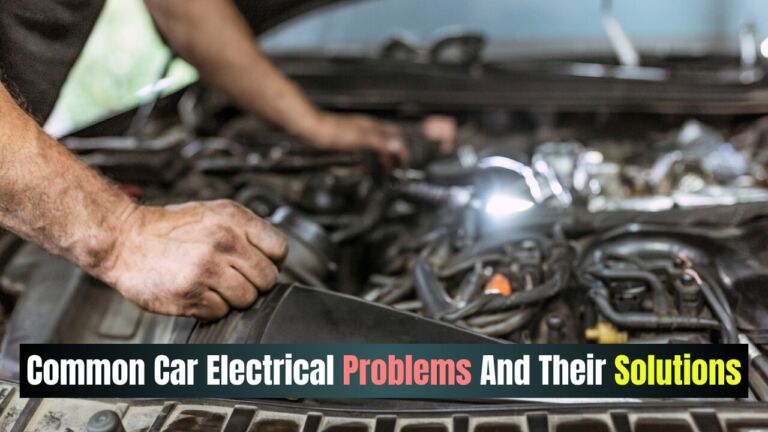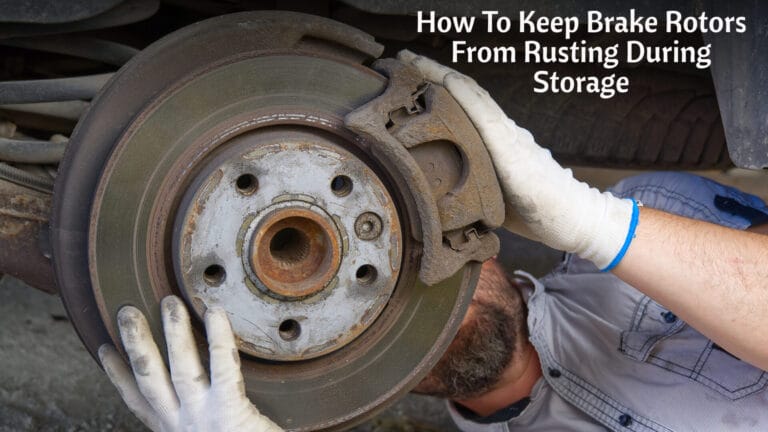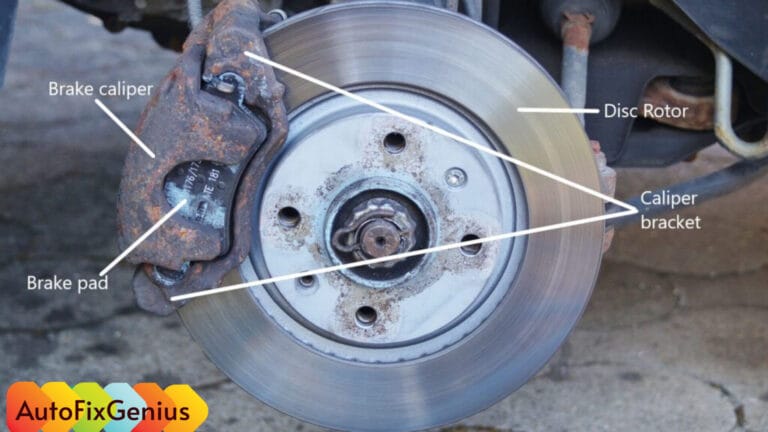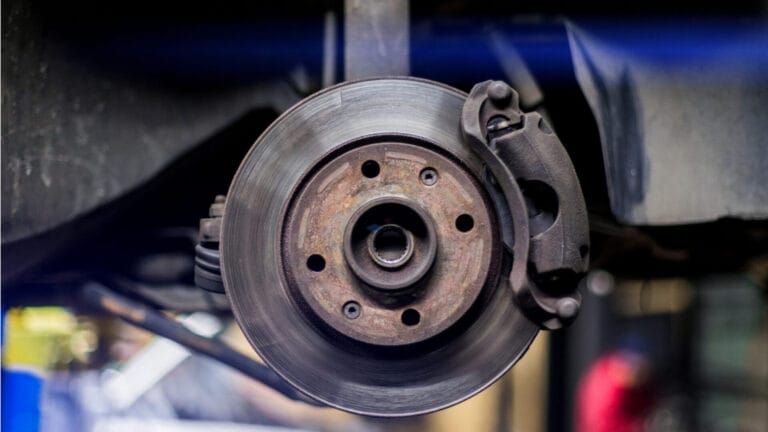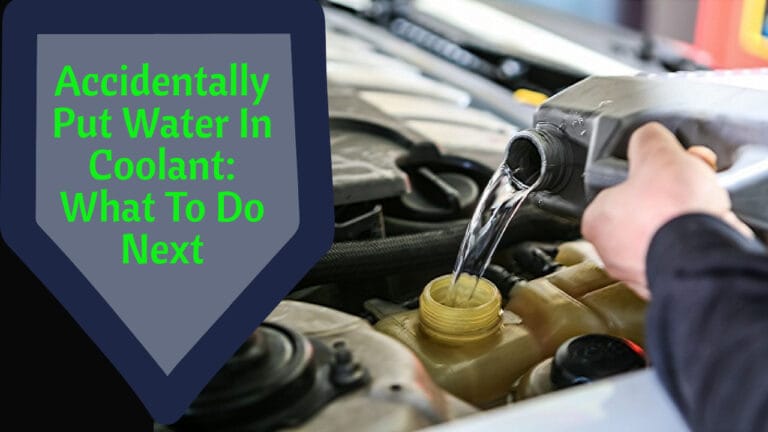How to Plug Brake Line When Changing Caliper?
The brake line is an important part of the braking system, and any mistakes during this process might cause brake fluid leaks and reduce your vehicle’s stopping ability. To avoid such problems, you must know how to plug brake line when changing caliper.
First off, Locate the brake line connection to the caliper, then seal it temporarily with a plug or cap and ensure a secure fit. This simple step guarantees a clean caliper replacement without compromising the functionality of the brake system.
Detailed instructions are provided below for clarity.
A Brake Calliper: What Is It?
An essential part of the braking system is the brake caliper. It holds the brake pads and clamps them against the rotor when hydraulic pressure is applied, causing friction and bringing the car to a halt.
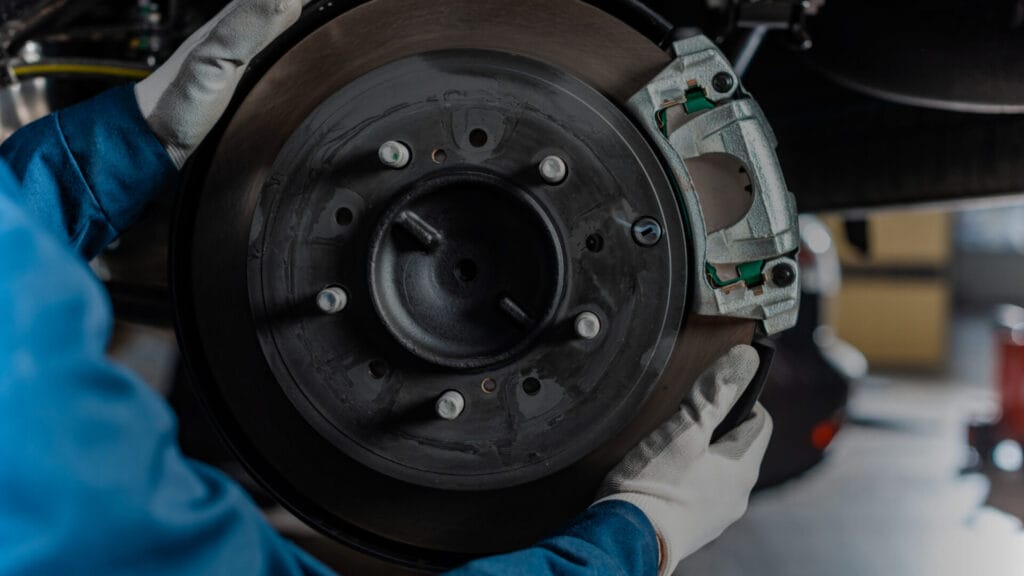
Why Plugging the Brake Is Compulsory When Changing Caliper
It is generally recommended to plug or block the brake line when changing a brake caliper to avoid the loss of brake fluid and air from entering the braking system. This is crucial for several reasons:
Preventing Fluid Loss:
When you remove the old caliper, brake fluid can leak out of the brake line, causing the brake system to lose fluid. Now, brake fluid is required to transfer force from the brake pedal to the brake caliper, resulting in the application of braking force. Too much brake fluid loss can lead to a loss of brake pressure and a reduction in braking performance.
Avoiding Air Ingress:
Unlike brake fluid, air is compressible. When air enters the braking system, it can cause the brake pedal to seem spongy or mushy. Under pressure, air bubbles might compress, limiting the efficacy of the braking system. Sealing the brake line can help prevent air from entering the brake system during caliper replacement.
Easier Bleeding Process:
It’s the usual procedure to bleed the braking system after installing a new caliper. The practice of eliminating air from brake lines to ensure adequate brake operation is known as bleeding. Sealing the brake line while replacing the calipers makes the subsequent bleeding procedure easier because there is less air in the system to purge.
How To Plug Brake Line When Changing Caliper
The procedure for securely plugging the brake line must be understood when changing a caliper on your car. Our guide offers comprehensive guidelines to guarantee a safe and effective procedure in a very easy-to-follow manner.

So, let’s dive into the details –
Step 1 – Safety Precaution
Make sure the car is on a flat surface. Lift the car safely on jack stands. The car must not move around. This will help you to work safely. When handling brake fluid, wear safety goggles and gloves.
Step 2 – Release Brake Pressure
Unscrew the brake fluid reservoir cap, usually found atop the master cylinder, and release the brake pressure.
Step 3 – Remove the Old Caliper
Remove the wheel to access the brake caliper. Locate the caliper and unscrew the mounting bolts on the caliper with a suitable socket or tool. Using a line wrench, carefully remove the brake line from the caliper; to stop brake fluid from leaking, plug the line. Slide the outdated caliper away from the rotor and store it.
Step 4 – Insert a Brake Line Plug
Use a brake line plug or rubber cap to quickly plug the open end of the brake line before entirely removing it from the old caliper. This keeps air out of the system and brake fluid from spilling.
An alternative is to temporarily stop the line with a specific brake line clamp. Make sure it is leak-proof and secure.
Step 5 – Put the New Caliper in Place
Confirm that the new caliper matches the old one precisely. Transfer any necessary parts, like brackets or pads, from the old caliper to the new one.
- Align the new caliper with the mounting bracket by sliding it over the rotor. Tighten the mounting bolts securely to anchor the new caliper in place.
- Use a line wrench to attach the brake line to the replacement caliper. Ensure all parts are correctly positioned and that all bolts are tightened.
- Reinstall the wheel, hand-tighten the lug nuts, lower the vehicle, and then tighten the lug nuts in a star pattern using a lug wrench. Pump the brake and check for leaks.
Step 6 – Bleed the Brake System (If Necessary)
To eliminate any air that may have entered during the caliper replacement procedure, it is crucial to bleed the brake system after installing the new caliper.
Follow this method—
- Grab brake fluid, a container, a helper, and a clear plastic hose.
- Then, find the bleeder valve on the brake caliper and connect one end of the hose to the container and the other end with this bleeder valve.
- Ensure proper brake fluid level in the reservoir and bleed the brake system. Close the bleeder valve and test the brakes by applying light pressure.
Step 7 – Check Brake Fluid Amount
Fill the reservoir with fresh brake fluid to the specified amount after bleeding the brakes, making sure no air is left in the system. Replace the reservoir cap securely.
Step 8 – Test the Brakes
To make sure the brakes are responsive and firm, carefully lower the car and press the brake pedal a few times. Look for any leaks at the connections of the brake lines.
Step 9 – Take a Test Drive
Ensure brakes are operating properly. Test them in a safe, open place at low speeds before you get behind the wheel. Keep an ear out for any odd sounds or weird brake pedal sensations.
Underrated Techniques to Plug Brake Line When Changing Caliper
The most popular and advised method for plugging brakes when removing a caliper is to use a brake line stopper, rubber cap, or brake line clamp.
However, there are a few underrated approaches that you may want to take into consideration in specific circumstances:
Ty-Wrap Method
If all else fails, you can temporarily seal the open end of the brake line with a strong zip tie or ty-wrap. Make sure it’s tightened all the way to stop brake fluid from escaping.
If you don’t have access to specialized tools or plugs, this solution may come in handy.
Vacuum Sealing
An alternate technique is to produce a vacuum in the braking system using a vacuum pump or brake bleeder.
You can create a vacuum in the system to stop brake fluid leakage when the caliper is removed by fastening the pump to the brake bleeder valve on the caliper.
However, this method needs specialized equipment, which not everyone has access to.
Hydraulic Brake Line Pinch Tool
Certain instruments may successfully pinch the brake line without causing harm, such as hydraulic brake line pinch-off pliers. These instruments keep the line securely sealed even when the caliper is being taken out.
They are not, however, as well-known or applied as conventional techniques.
Frequently Asked Questions
Can I use a clamp or pliers instead of a brake line plug to stop fluid flow when changing a caliper?
No, you can’t use a clamp or pilers instead of a brake line. It can damage the brake line entirely.
What happens if I forget to plug the brake line when replacing a caliper?
Brake fluid will leak, introducing air into the system and potentially causing brake issues. Always use a plug.
Is there a risk of over-tightening the brake line plug damaging the brake line during installation?
Yes, over-tightening can cause damage. Use the plug snugly but not excessively tight to avoid this issue.
Should I plug the brake line at the caliper or closer to the master cylinder during caliper replacement?
Plug the line at the caliper to prevent fluid loss and air from entering the system while working on the caliper.
When is it safe to remove the brake line plug after installing the new caliper?
Remove the plug after securely installing the new caliper, just before bleeding the brake system, to ensure proper functionality.
End Quote
Now that you understand how to plug the brake line when changing the caliper, make sure you follow the steps mentioned earlier to do it correctly
It guarantees the safe and dependable operation of your car’s brakes and protects the integrity of the brake system by preventing brake fluid loss.
Making this easy but important step a priority when replacing your calipers enhances the overall functionality and security of your car’s braking system.

